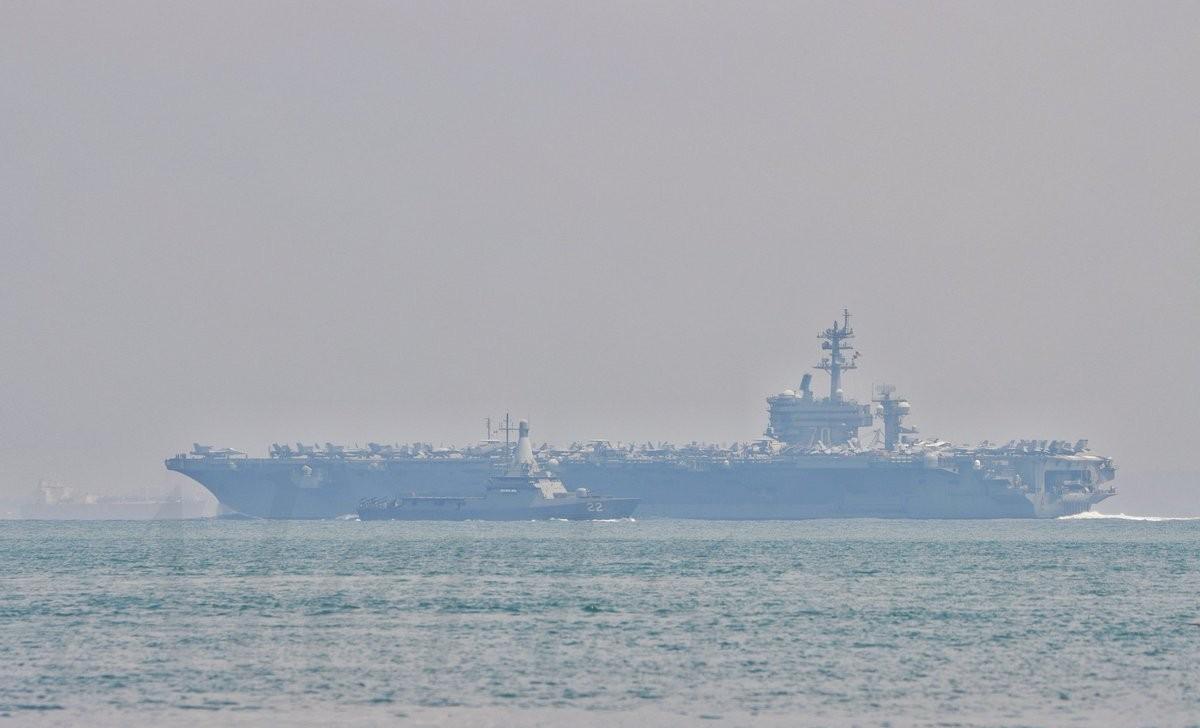According to the deployment strategy of the US Navy's nuclear submarines, nuclear submarines need to be located in front of the aircraft carrier's route and enter the position about 1 day in advance to detect whether there are nuclear submarines of other countries. If the carrier is in the Strait of Malacca, this means that the US nuclear submarines should have arrived in the South China Sea. Therefore, our top priority is to catch the nuclear submarine, due to the sea wolf accident, the operation of the US nuclear submarine will be limited, and it may be easier to be detected by the anti-potential quantity.
Producer: National Science Observatory (4018 exclusive debut)
The Carl Vinson aircraft carrier entered the South China Sea on October 24, which is the 9th time that the US military has entered the South China Sea this year, and from the deployment cycle of the Carl Vinson aircraft carrier, after entering the South China Sea, it should be returned to the US mainland. In this issue, the National Science And Technology Observatory will talk about the purpose of the US Navy's USS Carl Vinson aircraft carrier entering the South China Sea, and what activities may be carried out in the South China Sea.

Image interpretation: The US aircraft carrier CARL Vinson entered the South China Sea through the Strait of Malacca on the 24th
As a gateway to the south of China, the South China Sea has a large number of oil and gas resources, and has become a hot spot in the world, and its strategic significance is no less than that of the Persian Gulf. Since most of China's oil passes through the South China Sea from the Strait of Malacca and then enters China's territory, the South China Sea has become a bridgehead for the US military to contain China's development, and many provocative acts of the US military have occurred in the South China Sea.
The first is to continue to unite the countries around the South China Sea to carry out so-called various exercises, the purpose of which is to unite the countries in the South China Sea against China, and the US military conducts military exercises in the South China Sea, uniting Malaysia, Indonesia, and other countries, and even Vietnam and the Philippines, to teach them the tactics and tactics of amphibious landing operations, with the purpose of jointly dealing with China's South China Sea Fleet.
Photo interpretation: The USS Carl Vinson aircraft carrier strike group conducts joint exercises in the Indian Ocean
The second purpose is to find opportunities to carry out provocations, such as entering the 12 nautical miles of our island and reef, which are often provocative acts of the US military. On October 2, the U.S. Seawolf-class nuclear submarine hit an underwater unknown object in the South China Sea, which may also carry out further provocations against China's islands and reefs. The third purpose is to continue joint operations with the Japan Maritime Self-Defense Force in the South China Sea in response to anti-ship fire from the Plaster. Therefore, the US military entering the South China Sea this time is very much to see, especially the deployment of nuclear submarines, due to the damage of the Seawolf class, which means that the nuclear submarines that follow the operation of the Carl Vinson aircraft carrier will be limited in their range of activities.
Photo interpretation: The nuclear submarine belonging to the USS Carl Vinson aircraft carrier formation is already in the South China Sea
According to the deployment strategy of the US Navy's nuclear submarines, nuclear submarines need to be located on the route of the aircraft carrier and enter the position about 1 day in advance to detect whether there are nuclear submarines of other countries. If the carrier is in the Strait of Malacca, this means that the US nuclear submarines should have arrived in the South China Sea. Therefore, our top priority is to catch the nuclear submarine, due to the sea wolf accident, the operation of the US nuclear submarine will be limited, and it may be easier to be detected by the anti-potential quantity.
If we can catch the US nuclear submarine in the South China Sea, we can curb the scope of the aircraft carrier's operation to the greatest extent. Because one of the natural enemies of aircraft carriers is nuclear submarines, nuclear submarines are more lethal than anti-ship missiles. Once the US nuclear submarines are effectively contained, the number and scope of activities entering the South China Sea will be controlled on a large scale. This article is exclusively published by @Guoke Observatory, and any form of reproduction is not allowed.